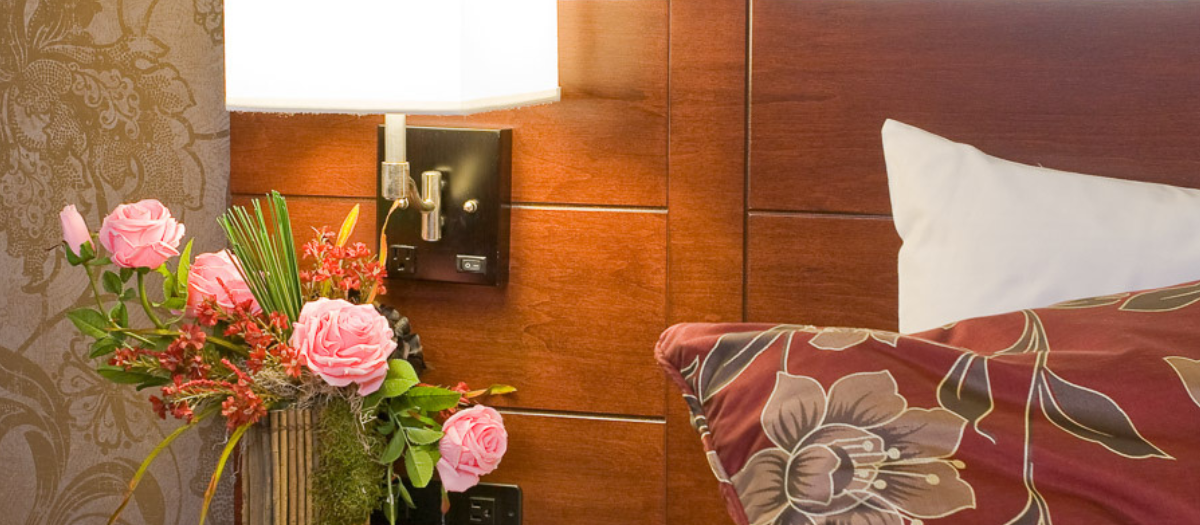Smart Furniture and the Future of Casegoods
Hotels are in a period of significant evolution and opportunity, during this time, technology has emerged as a fundamental element in the hospitality industry, influencing both the operational aspects behind the scenes and the technologies guests encounter. This encompasses the latest electronic devices utilized by hotel guests on-site, as well as the integration of smart furniture.
This evolution has prompted us to reconsider how interactive technology is incorporated into every facet of the hotel experience, extending to furniture pieces and room integrations. This shift has sparked discussions and inspiration surrounding the creative application of technology within the hospitality environment and how it can enhance overall guest satisfaction.
In this blog, we look at a couple of different ways technology is incorporated into furniture and guest rooms. As well as what guest-centric design could entail and what the future of casegoods and hospitality will look like in a technologically advanced world.
Technology-Forward Furniture
Newly renovated hotels have the opportunity to focus on technology and incorporate more smart furniture into their designs. This could include pieces with multi-plug and USB ports for charging, LED lighting elements, Bluetooth speakers, and more. The most important and expected amenity in a hotel or restaurant is convenience. For this generation of travelers, that translates into an experience that supports their high-tech lifestyle.
However, a challenge to smart furniture is building pieces that fit naturally into the design. You may want to conceal the plugs and ports. However, be mindful that they are not so concealed that guests can not locate them. Another issue with smart furniture is often building pieces with enough power to them. Remote power does not have as long of a life. This may mean rooms and other spaces featuring smart furniture will need floor outlets or other points of connection readily available.
Another aspect of smart furniture is understanding where you can incorporate designs that support accessories. For example, guests may not be utilizing the drawers of bedside stands for storage. But, likely, they need somewhere to set their phone, laptop, or tablet device to charge. Incorporating a small pull-out platform on a bedside stand instead of (or in conjunction with) a drawer could allow a place for devices to sit and charge.
The melding of technology and furniture can be a complicated endeavor. It’s important that the pieces and their technological elements are made easy for guests to find without affecting the overall design of the piece.
Guest-Centric Designs
Looking to the future, technology will continue to be a driving force of design evolution and guest satisfaction. It will be critical that hoteliers understand the needs and desires of guests and how technology fits into their travel. For example, utilizing the television as a monitor for guests to access the internet or allowing guests to customize their environments via cloud technology. Guests today have become adept at using their smartphones and apps to not only enter a room, but also control other elements like lighting, room temperature, window coverings, and in-room entertainment.
As we continue to enter into a bring-your-own-device (BYOD) world, the future of hotel technology will rally around Bluetooth. This is especially important when manufacturers such as Apple alter how their products are charged or function. Some iPhone iterations no longer have headphone ports. Using wireless compatibility for whatever tech is being connected to will be imperative as hotels try to emulate the tech lifestyle that many travelers experience at home. It will be important to continue to consider what type of furniture and technology can be specified but won’t go out of date as new phones, tablets, and devices are released.
Also, consider what kind of technology is available in individual rooms and suites and what is available in business centers and public areas. It will be key to have highly functional, adaptable furniture to meet the unique needs of guests and in the spaces where they need it most. Hotels that optimize space and lean into guest-centric design will need to consider how they incorporate furniture and technology throughout the facility.
Technology-Driven Experiences
Hotel technology goes beyond smart furniture. It can include other designs and systems like virtual check-in/check-out and keyless room access. Even the ability to book activities and tickets online along with integrated communications and high-speed WiFi. Several of these features are not just anticipated but expected of a hotel stay.
For example, the rise in virtual and remote working has prompted changes in hotel business center design and functionality. Designers are challenged to find solutions that integrate technology in both creative and practical ways. This may mean incorporating more outlets and charging ports, designing adjustable lighting, and leaving enough open wall space for interactive smart walls and displays.
The rise of smart walls and displays is expanding beyond their conventional roles, providing guests with entertainment and games, access to news and weather reports, and aiding in tourism with interactive maps featuring local shops, museums, restaurants, and attractions. Technologically-centric experiences are becoming increasingly integral to cater to both business and leisure travelers.
The Takeaway
Everyone, whether they are traveling for business or leisure, young or old, uses various types of technology. And they expect their travel experience to cater to their lifestyle. It is the easiest way to attract not just a specific demographic, but an entire clientele.
But the future of hotels and technology will continue to be a complicated relationship. Smart furniture and hotel design will need to be new, creative, and highly beneficial to the guest. Working with manufacturers to customize furniture that offers the best tech solutions to hotel guests is a worthwhile investment. And there are benefits that will be felt for years to come.
Despite the pervasive influence of technology in our daily lives, it is crucial to emphasize that hotels should exercise caution and not go overboard when designing technologically advanced interiors. Not all guests prefer to be constantly connected when they travel; some actively seek a break from their technology-dominated routines. As always, maintaining a balance is essential.


